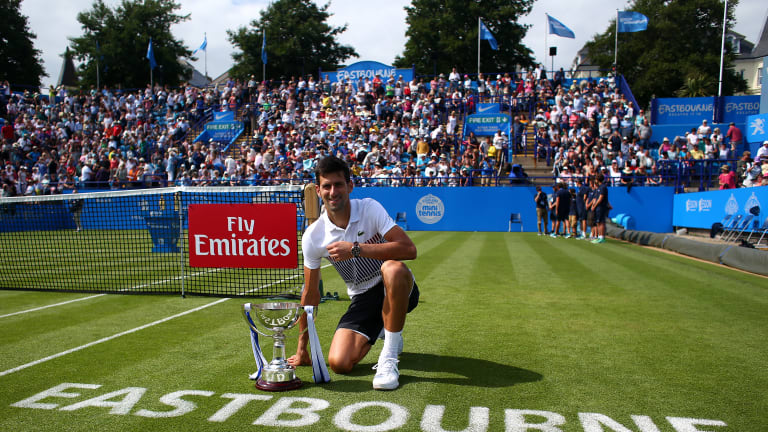It was five years ago this week that a lost Serb with a sore elbow emerged from the fog and landed in the seaside city of Eastbourne. Looking to reignite his season after 12 months of struggle, Novak Djokovic would break ranks with the Big 3 and become the first to play an official tournament the week before Wimbledon since he, Roger Federer, and Rafael Nadal took over the sport in the mid-2000s.
“Seven years, I think,” Djokovic said wistfully to begin his pre-tournament press conference. “Last time was in Queen's 2010 that I have played before Wimbledon.”
The former world No. 1 was indeed a rare sight in the pre-Wimbledon grass-court swing, typically opting for an exhibition at The Boodles rather than commit to a more official preparation.
“You get really some good matchups, but you don't play for points,” he explained after his opening round win over Vasek Pospisil. “It's still a match, so your score is being called, which is good for a player mentally and to get some match play and play points on the grass. But in the other hand, you don't feel that pressure of ‘I need to win.’”
